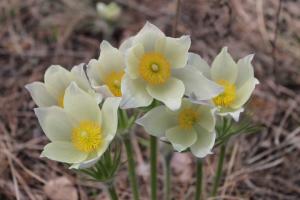Whitefly– It is not difficult to detect the pest: as soon as you touch a leaf, the whiteflies immediately flutter up and fly to other leaves (plants).
In places of damage caused by individual individuals, faintly noticeable small yellowish spots form, but with mass reproduction, the whitefly greatly inhibits the lemon, which affects vegetative and generative development: leaves turn yellow and fall off, shoots dry out, and fewer fruits are formed.
If there are a lot of pests, then they pollute the leaves with their sugary secretions, which, in turn, settle on sooty fungi, which impede the processes of photosynthesis and respiration, which inhibits the normal development of plants.
Aphids- With the help of a proboscis, aphids suck juices from the tissues of leaves, stems, and buds. Damaged leaves curl, become deformed, partially or completely die, buds do not open or produce ugly flowers. The ends of the shoots may become bent, and if severely damaged, they stop growing.
Prevention.
Thrips- small, mobile insects with an elongated body (0.9-1.5 mm long) of a dark brown color, with two pairs of membranous wings bordered by long hairs. The pest lays eggs in the leaf tissue; after 8-10 days, light yellow larvae emerge and damage the leaves by sucking out the juice. As a result, the upper side of the leaf blade acquires a silvery sheen, physiological processes are disrupted, and the plant loses its decorative effect. If the infection is severe, the leaves become discolored and fall off. On lemon and other citrus crops in rooms, greenhouse and tobacco thrips are most often found.
Control measures are the same as against spider mites.
– Adult insects and larvae damage indoor lemons. Pests give preference to young, recently emerged fruits, therefore, from the moment the ovaries appear, mealybugs immediately strive to colonize them, accumulating and creating colonies on the amniotic cup, on the stalk, mainly on those parts that face the inside of the plant. Often, scale insects destroy the cells of the fruit stalk through numerous punctures, as a result of which they dry out and the fruits fall off. In places where insects accumulate, the peel of lemons becomes deformed, cracks, and the fruits rot, and the remaining ones lose their marketable quality (yellow-brown spots appear on them).
In the absence of fruits, the pest settles on buds, young leaves and shoots, as a result of which the leaves become chlorotic, normal development is disrupted, the tree noticeably weakens and may dry out.
The same measures are used against pests as against spider mites or aphids.
– immobile insects, most often attack weakened plants. Pests on the surface are covered with dense waxy secretions and resemble scales of various shapes. The first sign of the appearance of scale insects and false scale insects is the appearance of a sticky sweet liquid on the leaves, on which sooty fungi subsequently develop.
Control measures- manual collection, chemicals and other available means.
Potted lemons may pose a certain danger earthworms , which fall into a container with fresh soil mixture.
You can see them after watering, when they crawl to the surface of the earth. They penetrate the soil with their passages: the roots of the lemon, in contact with the air, quickly become covered with a cork layer and can no longer absorb water and nutrients. Young plants with an insufficiently developed root system are most sensitive to the activity of worms.
Speaking about lemon pests, it is worth mentioning poduras and sciarids.
Fools– small white jumping insects that live in the top layer of soil, sciarids– mosquitoes (about 1mm long). They usually do not cause much damage to adult plants; their appearance usually indicates that the soil is waterlogged and plant debris is rotting in it.
However, the larvae of these insects can pose a serious threat to germinating seeds and developing seedlings as they feed on growing roots. In this case, the young leaves quickly turn yellow and dry out, and then the plants themselves die.
You can also pour a 2-3 cm layer of sand on top of the soil layer into the pot.
Many lemon diseases at home are dangerous, some are completely incurable. And in order not to lose your citrus, you need to know how it can become infected and how it can be saved from harm.
One or a combination of several of the following factors can lead to the disease.

Captures entire areas of young green twigs, preferring the most tender shoots
Video about indoor lemon diseases
The fight against it, depending on the number of insect colonies on your citrus, is different. If there are only a few aphids, it is enough to crush them manually by cutting off the affected areas and fertilizing unscheduled lemon Tree complex fertilizing. For large lesions, insecticides such as diazmnon are used. Spraying with garlic infusion helps very successfully. To do this, 7-8 heads are cleaned, crushed, infused for a day in a bucket of water, decanted and our product is ready.
Replacing diseased soil with subsequent calcination of the infected soil helps against root aphids. And we dip the plant in a solution of a contact insecticide or, again, an infusion of garlic, only we take the concentration of the latter half as weak.

Replacing diseased soil followed by calcination of the infected soil helps prevent root aphids.
How to deal with it? Just like with aphids: spraying with garlic water, insecticides and soapy water. Take 2 tablespoons liquid soap, dilute it in a liter of water and treat the affected areas. After an hour we give it to the plant good shower rinsing soap from foliage. Repeat after two or three days.
Spider mite On lemon, just like aphids, they love young leaves. Its presence is noticeable due to the characteristic cobwebs clinging to the curled leaves. The mite settles on plants that grow in very dry rooms. It does not tolerate humidity. Therefore, we generously spray the diseased citrus with a one percent solution. boric acid. Sometimes a single procedure is enough to kill the tick, but if the enemy does not give up, we repeat the spraying after 4-5.
It should also be remembered that protection against insects and ticks helps prevent viral, infectious diseases, some of which penetrate the tissues with the saliva of aphids or scale insects.

Spider mites on lemons, like aphids, love young leaves
Citrus infections
We will talk about diseases of a bacterial, fungal and viral nature. Many of them are quite easy to treat, some are difficult, and many viruses are incurable. The result of lemon weakening due to improper care or damage from insect pests is often fungal attacks, such as sooty fungus, which leads to even greater weakening, drying out, and a sharp slowdown in growth.
This scourge is easily recognized by the coating in the form of ash on the leaves and branches. It's easy to get rid of it - just rinse the wood thoroughly under warm shower using a dish sponge. In the meantime, the room where the infected citrus grows needs to be well ventilated.
Scab is also fungal in nature. It manifests itself as putrefactive lesions on leaves, fruits, and branches. The spots darken and soften. Affected foliage and fruits fall off. Its spores are carried by wind or insects. The best way to fight scab is through prevention. In the spring we treat the plant with two percent solutions of copper and iron sulfate. If signs of disease are detected, we remove and destroy all diseased areas. And we treat the lemon itself with a five percent solution Bordeaux mixture or the drug Strobilin.
Another fungus is wart. The name speaks for itself. Wart-shaped growths appear on the leaves. Destroys the annual growth of greenery and fruit harvest, greatly weakening your citrus fruits. We fight it the same way we fight scab.

The best way to fight scab is through prevention.
Most often, the answer to the question of why lemon fruits fall off is scab or warts.
Infectious diseases are more difficult to treat. The most common among them: gommosis and root rot. Gommosis is expressed in rotting, cracking of the trunk bark, and gum formation. This greatly weakens the plant and sometimes leads to the death of the above-ground part. Two preventive rules are very effective against gommosis:
- We do not bury the root collar, otherwise the risk of stem rotting increases many times over
- We water the plant with warm water - there is no need for unnecessary stress on the roots.
Root rot is similar to gommosis, but only affects the roots. Signs include wilting of leaves, drying out of entire branches, general weakness, and premature leaf fall.
Video about helping lemon
We fight as follows:
- We remove the plant from the pot, clean the roots from the soil
- We sterilize the contaminated soil by calcination, and pour new soil into the pots.
- Cut off rotten areas with a sharp knife
- Place the roots in a pink solution of potassium permanganate for an hour.
- Remove, lightly dry, and dust the cut areas with wood ash.
- We sit in new soil without deepening the root collar.
- We carefully monitor the plant and fertilize it more often.
And viral diseases of indoor lemon are incurable.
Of these, the most common are leaf mosaic, expressed in the form of pale cobweb patterns on the foliage, and cancer. Cancer looks like scab or rot, but the fruit and tree rot as if from the inside, burn out. Such plants must be destroyed before they infect others.
The most common pests of lemon are mites, scale insects, aphids, nematodes, and garden slugs.
How to fight if scale insects attack lemons
Particularly dangerous pests of homemade lemons are scale insects. When they appear on leaves and branches, convex oval plates about 4 mm long are formed. Having chosen for yourself the most appropriate place, the larvae of scale insects stick tightly to it, gradually becoming covered with a dark shell, and it is very difficult to see them.
There are several varieties of scale insects: black, patterned, yellow-brown, spotted, round and oval. All varieties are applied great harm plant. As practice shows, it is not easy to fight them, since the wax shield formed around the scale insect protects it from external influences, including the effects of pesticides. When living on a plant for a long time, the pest manages to multiply and infect neighboring ones.
The first sign of the appearance of this insect is a sticky, transparent coating on the leaves, reminiscent of syrup. Affected trees quickly weaken, become depleted and dry out.
If a scale insect has attacked lemons, you can use it to destroy it. modern drugs– insecticides: “Aktara”, “Aktellik”, “Fitoverm” and others. When watered or sprayed with insecticides, the plant absorbs poison, and its juice becomes poisonous. The scale insect sucks out the poison and dies. After wood processing upper layer soils are replaced with fresh ones. Spraying is carried out 3-5 times with an interval of 15 days. The disadvantage of this method of control is that the fruits after processing of citrus will be unsuitable for food.
There is another way to deal with scale insects on lemon. The leaves are washed with soapy water or tobacco infusion (50 g of tobacco dissolved in 1 liter of water). The solution is infused for 2 days. Washing is carried out several times a day.
A soap solution consisting of green soap (5 g) and anabasine sulfate (2 g) gives a good effect. These components are mixed in 1 liter of warm water, and the affected plants are washed with the prepared solution. After a day, the solution is washed off clean water. This treatment is carried out once a week for a month.
Lemon scale is removed using a soap-kerosene emulsion. Add 10 g of kerosene and 5 g of soap to a liter of water. The tree is sprayed 1-2 times a week.
Lemon pests: spider mites and their photos
Spider mites on lemons attack young leaves and immature shoots. It settles on the underside of the leaf blade along the veins and feeds on the juice of the leaves, after which they turn yellow and dry out. It is quite difficult to detect a tick with the naked eye, since this pest reaches no more than 1-2 mm. Signs of its appearance are small, light dots - places where the leaf plate is punctured. In some cases, the leaves curl up, and on them back side you can see the web. New mites hatch in the web, and the affected leaf falls off.

Spider mites can be red, yellow, orange, white, or transparent. The most common pest of indoor lemons is the red spider mite.
If an insect is detected, the tree is sprayed with sulfur. Pesticides are also used to destroy it. For preventative purposes, the lemon is washed under running water, paying more attention to the underside of the leaves. Spraying the affected plant with water and laundry soap has a good effect.
Spider mites do not tolerate ultraviolet rays, so when fighting them they are placed under a special ultraviolet lamp for 1.5-2 minutes. This session is not only harmless to the plant, but increases its resistance to diseases and pests
To destroy spider mites, you can use 35% sulfaride paste. The tree is treated with this solution 3-5 times with an interval of 7-10 days. However, such treatment is not recommended at the flowering and fruit set stage.
Aphids on homemade lemons: how to get rid of them
Aphid – small insect light green color, 1-3 mm long. It quickly increases its numbers, occupying the trunk, leaves, ovaries, and shoots of the tree in large colonies. It produces 10-20 generations per season. It sucks juice from leaves and young shoots, after which the leaf plate is deformed and the ends of the shoots are bent.

It is quite easy to detect the pest, since aphids are homemade lemon, due to its light color is clearly visible.
In order to prevent the occurrence of aphids, citrus leaves and branches are washed 3-4 times a month under running warm water. During bathing, cover the soil with polyethylene. In addition, they periodically inspect the lemon in order to notice the insect at an early stage, when it will be easier to get rid of it.
Effectively fights the appearance of aphids garlic water. A crushed head of garlic is placed in a glass hot water and insist for 2 days. The tree is sprayed with the prepared infusion every other day for a week. After 5 days, the procedure is repeated.
You can get rid of the insect by treating it with dichlorvos. To do this, the lemon is placed in plastic bag, where a cotton swab soaked in dichlorvos is placed. The plant is left in this position for 5 hours, after which the leaves are washed or sprayed with warm, clean water.
A 3% solution will repel aphids acetic acid. Wipe the plant thoroughly with this solution.
In order to prevent the appearance, it is recommended to place geranium next to the citrus, the aroma of which this insect cannot tolerate.
A strong solution of table salt (70g per 1 liter of water) will help to completely destroy the pest. Lemon is sprayed with saline solution 3-4 times with an interval of 5 days.
Chemicals are used only in cases where other methods do not help.
Mealybug on lemon
When a mealybug infests a lemon, a fluffy appearance appears on the leaves. white coating. In addition, clear, sugary discharge may appear. This pest sucks juices from young shoots, buds and leaves, and attacks the root system. At the same time, the growth of the tree slows down significantly.

There are several varieties mealybug. Depending on the type, its dimensions vary from 3 to 6 mm.
To avoid the appearance of mealybugs, it is necessary to monitor the humidity in the room. It should be quite high (70-80%). The plant should be kept clean and damaged leaves and flowers should be promptly removed.
When a tree is damaged by this insect, drugs such as karbofos, Intavir, Decis and others are used.
You can use other methods to combat the mealybug. Citrus leaves and stems are washed soap solution, or infusion of garlic with soap. To prepare the infusion, pour several cloves of garlic into 0.5 liters of hot boiled water and infuse for 4 hours. After this, the infusion is filtered and applied to the affected parts of the plant.
Other lemon pests at home
The citrus nematode is a small, transparent or white worm. It gnaws through the roots, settles in them and sucks out the plant juice. At the same time, the lemon leaves begin to fall off rapidly. If you dig up the roots, you can find small swellings or growths on them, and the pest lives in them.
Used in the fight against nematodes chemicals. It is useful to apply when it appears organic fertilizers, which will help restore the soil and create conditions for the life of natural enemies of nematodes: ants, springtails, mites and other insects.
To prevent lemon pests from appearing at home, it is recommended to carry out prevention. To do this, citrus leaves are regularly sprayed or wiped, especially on the underside. Periodic wiping of wood with soapy water and added laundry soap followed by rinsing with warm water.
The photo below shows some lemon pests:
Today, citrus fruits as indoor plants are not uncommon. Lemons, tangerines, oranges and others are successfully grown.
But citrus fruits often experience sudden yellowing of leaves, their massive shedding and drying out. It's connected with improper care after them. Reasons: poorly loosened soil surface, no air access to the roots, too much nitrogen or little potassium in the soil, deep planting of plants, dry air in the room, especially in winter time, sudden temperature changes and drafts, keeping pots on a cold windowsill. And even taking the plant out onto the balcony or veranda can cause it stress and, as a result, shedding leaves. All these factors weaken plants and reduce their resistance to pests and pathogenic microorganisms.
If the care of citrus fruits is correct, and the leaves and young shoots are still chlorotic and often covered with a sticky liquid, then the culprits are sucking pests (scale insects, false scale insects, scale insects, aphids and mites).
Of the scale insects on citrus fruits, there are convex and brown scale insects, of false scale insects - olive scale insects, Japanese wax scale insects, citrus wax scale insects and soft scale insects. Adult females of these pests are covered with waxy secretions called shields, the color of which varies from dirty gray to brown-black. It is interesting that light, flat scutes are characteristic of scale insects, while dark and convex scutes are characteristic of false scale insects. They are located along the central veins on both the upper and lower sides of the leaves. Pests are dispersed by wandering larvae. Damaged stems and young shoots become deformed and dry out, and leaves often fall off.
Some of the most dangerous pests citrus - mealybugs (bristle mealy bugs and citrus mealy bugs). They can be detected thanks to the white powdery felt with which females cover themselves and their offspring for protection. They are found on all above-ground parts of plants and love to hide in the axils of leaves.
Often young shoots, buds, and leaves (on the underside) are inhabited by small, sedentary greenish-yellow insects. These are aphids. Feeding on plant sap, they cause deformation, curling and drying out of the affected organs. Aphids, like scale insects, pollute plants with their sugary secretions, on which a sooty fungus then settles. Citrus fruits lose their decorative properties, their photosynthesis process slows down, which leads to general depression, retarded growth and fruiting.
On citrus fruits there are common spider mites and red citrus mites - greenish-yellow and dark-reddish dots barely visible to the naked eye. Spider mites feed on the underside of the leaf blade, causing characteristic marbling, yellowing and massive shedding of leaves. When plants are severely damaged, a thin weaving web is noticeable on all shoots where leaves once grew. The red citrus mite often feeds on the upper side of leaves. Among the soil pests, very small jumping white podura insects are often found. They damage young roots, and to get rid of them, it is enough to reduce watering.
Measures to combat sucking pests are very diverse. Garlic infusion is recommended as a folk remedy. Here is one of the recipes: three large heads of crushed garlic are poured into 0.5 liters of vodka, left in the dark for a week, then filtered and you can spray the plants (1-2 tablespoons of infusion per 1 liter of water). Add 1 teaspoon of any detergent for dishes. The stock solution is stored in the refrigerator. An infusion of hot red pepper is also toxic against pests (30g of pepper powder is infused in 0.5 liters of vodka. The working solution is prepared at the rate of 1-2 teaspoons of infusion per 1 liter of water). In the fight against aphids, you can use an infusion of tobacco (1 part of tobacco dust is poured with 10 parts of boiling water, infused for 24 hours, then filtered). Before spraying the plants, the infusion is diluted three times with water, adding 4 grams per 1 liter. household soap
It is often effective against mites to expose plants to cold showers three times over the course of a week.
If the number of pests is high in the spring and summer, you can take the plants out onto the balcony, loggia, veranda, or into the yard and treat them with one of the drugs approved for citrus fruits: Fufan - 10ml/10l of water; Actellik - 50 ml/10 l of water; Kemifos - 10 ml/10 l of water.
To avoid burns, it is recommended to carry out all spraying with preparations and infusions in the evening or in cloudy, dry weather.
The main measure to prevent the development of diseases is proper care for plants. Healthy and actively vegetating, they are able to resist harmful microorganisms themselves. If your citrus fruits do get sick, they need to be isolated immediately. Folk remedies against diseases are ineffective. But there is a way out. Wait until it gets warm, take the plants outside and carefully spray with one of the approved products. If the infection has just begun, the affected areas of the trunks can be cleaned, treated with a strong solution of potassium permanganate and then coated with garden varnish. Leaves showing leaf spot symptoms can be trimmed and removed.
M. Sysoeva, N. Ivashchenko, Ustyansk plant protection station
One of the most common and dangerous pests on indoor lemons and tangerines are aphids. It most often affects the plant during active growth young shoots, settling on them and quickly sucking the juice out of them. By doing this, it slows down its development; you can also observe that citrus leaves dry out and fall off, and young shoots dry out. In addition, aphids on indoor plants is a dangerous carrier of various viral diseases that can lead to their death.
Appearance of aphids on a young shoot
Aphids on homemade lemons are usually insects small size, about 0.5 millimeters, light green, shade merging with young shoots. Larvae are lighter in color, adults are darker. Because of this color, it is difficult to immediately notice and take appropriate measures. This insect reproduces incredibly quickly; 15-25 generations can be born in less than a season.

Aphid on a plant leaf
In the most early stage Infection with aphids can be seen on the back of young leaves, on the ovary. If you see at least one such representative on a lemon and you have a suspicion that aphids live on the lemon, there should be no questions about how to get rid of it, you should take action immediately.

Adult aphids lay eggs in large numbers
Aphids - reasons for appearing on lemons

The leaf blade becomes deformed due to aphid activity
The signal can be deformed and sticky leaf plates and ends of shoots, the reasons for their appearance are aphids on lemon. In spring, the larvae appear first and are the first to be noticed. They settle in in large groups mainly on the young trunk and leaves. This is due to the peculiarities of their structure; they feed by sucking the juice from plants through the proboscis; in aphid larvae it is not strong enough, so it is much more convenient for them to use young citrus shoots. The larvae are very voracious, as they need energy for growth and development.

Aphids with wings can significantly expand the source of infection
But if the situation is neglected, then adult individuals will appear, which can lay a huge number of eggs in a short time. When there are a lot of aphids, they begin to develop individuals with wings, which can migrate from plant to plant, lay eggs and increase the focus of infection.
Aphids: how to fight and what to do?
If it does appear on your home flowers, don’t be too upset. a large number of proven and virtually guaranteed ways to get rid of aphids on lemons.
You can treat citrus for aphids at home different ways, depending on the degree of damage.

Colony of adult aphids on the back of a leaf
The most in a radical way, after which the question should no longer arise: How to deal with aphids on homemade lemon? — are industrial chemicals with wide-ranging effects. We use the following tools:
Fitoverm- one of the most common and proven highly effective remedy. It can be used both in the greenhouse and on outdoors. If you take precautions, it can also be used at home. The wide-spectrum drug, in addition to aphids, also destroys other pests on lemons: spider mites, thrips. Treatment should be carried out several times at weekly intervals, as new populations may emerge from the eggs laid.

Fitoverm is a common and reliable means from aphids

Multi-purpose pest control – Iskra Zolotaya
Some home gardening enthusiasts describe using dichlorvos against aphids indoor citrus fruits. The product is very aggressive and dangerous for the plant itself, so it should be used with great caution. The plant is placed in a bag and a cotton wool or napkin treated with dichlorvos is placed there for several hours. After completing the procedure, the leaves are thoroughly washed with water.
If the situation is very advanced and the aphid colony has already completely filled the entire crown of the plant, then you should apply mechanical method pest removal. The soil in the plant pot is covered with a bag or cellophane and the crown is washed with water and soapy water and cleaned with a soft brush.

Good old Dichlorvos
Adviсe
In nature, aphids are in symbiosis with ants, who feed on their sweet secretions, as if “grazing” them. Ants protect aphid colonies from pests and can transfer the larvae to new plants. When destroying aphids, you should also destroy ants.
After carrying out the procedures, a few days later you should spray the citrus crown with Epin to level out the stress suffered by the plant.
Folk methods of fighting aphids on lemon and tangerine
Aphids appeared on plants much earlier than the chemical industry, so there are several folk ways fight against aphids on lemon, which help, if not completely destroy it, then greatly reduce its population. They can also be used as preventive methods for treating plants against pests of this type.
« Ladybug" to help
Aphids have enemies in the natural food chain, that is, insects that feed on them. This is everyone's favorite "Ladybug". If you ensure that it lives next to plants, then the aphid will be destroyed in a natural way for nature.

"Ladybug" will gladly rid you of aphids
Garlic and Geranium will protect against aphids
Aphids cannot tolerate strong odors. Natural ways to repel aphids are to plant garlic, peppermint or geranium in close proximity to lemon and tangerine trees. The measure is rather a preventative one, since it may rather scare away aphids from your plants, but not destroy them.

The pungent smell of geranium repels aphids
Pest ash
A well-proven folk remedy to destroy aphids is to use wood ash. It is either sprayed on the leaves of plants, or mixed with a soap solution, washed or treated with leaves. Ash is also a good preventive measure for plants against root rot.

Ash is an excellent folk remedy for aphids
May the force be with you in the fight against aphids and may you have good harvests!
We also suggest that you familiarize yourself with methods of controlling other pests on homemade lemons and tangerines, such as Spider mites and Thrips in our article.








